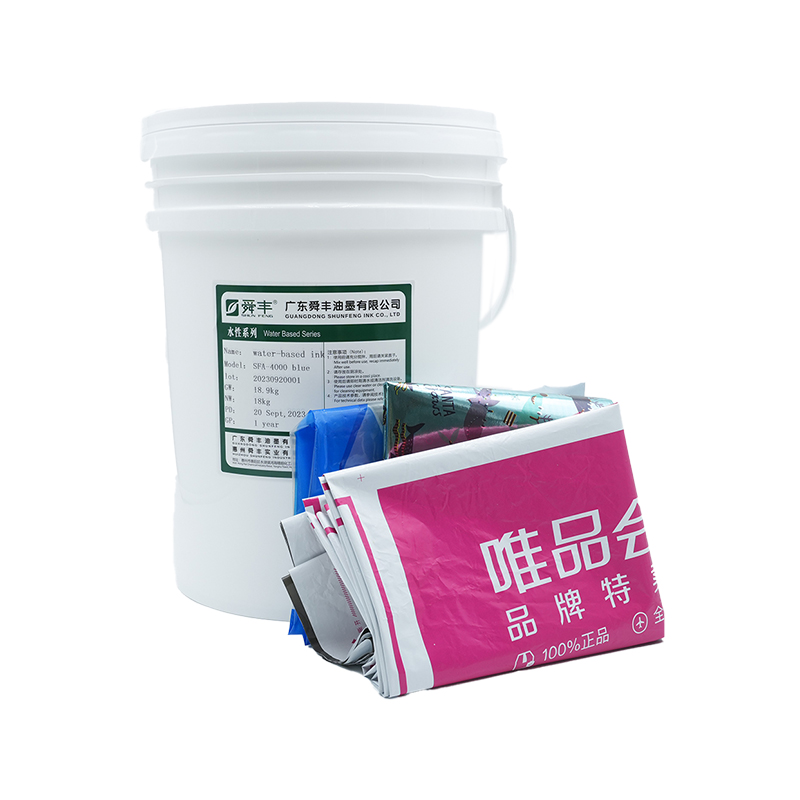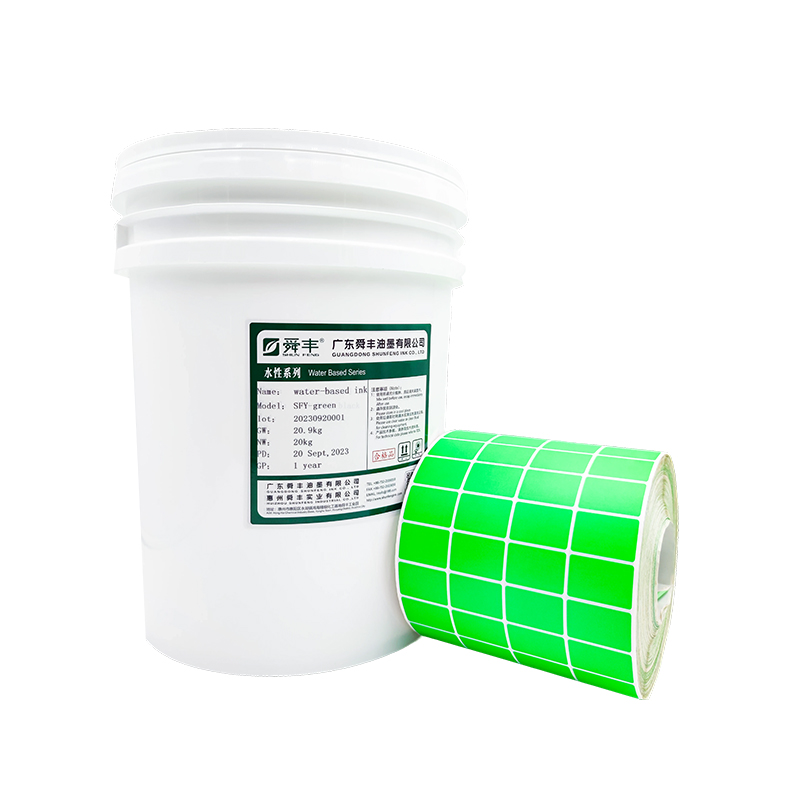What factors affect the drying speed of flexo water-based pre-printing ink?
Release Time : 2025-11-05
The drying speed of Flexo water-based pre-printing ink is a key factor affecting printing efficiency and finished product quality. Its formation mechanism and control logic involve four dimensions: ink formulation, printing process, environmental conditions, and substrate characteristics. As a water-based system using water as a solvent and alkali-soluble resin as a binder, its drying process must balance the dual needs of moisture evaporation and resin film formation. Fluctuations in any stage will significantly alter the drying efficiency.
From the perspective of ink formulation, resin type and pigment characteristics are the core factors determining the drying speed. Resins with high solubility prolong the solvent release cycle. For example, polyvinyl alcohol resins, due to their tightly entangled molecular chains, require higher temperatures or longer ventilation times to complete evaporation; while acrylate resins, with their loose molecular structure, have a faster solvent release rate. The influence of pigments is reflected in particle size and wettability. Ultrafine pigments with a particle size of less than 5μm hinder solvent diffusion due to their increased specific surface area. Simultaneously, the worse the wettability between the pigment and the resin, the stronger the ink's thixotropy, and the easier it is to form a surface skin in the early stages of drying, which in turn delays the removal of internal moisture. Furthermore, the ratio of co-solvents is crucial. For every 5% increase in the addition of low-boiling-point solvents such as ethanol and isopropanol, drying time can be shortened by 20%-30%.
In printing process parameters, ink layer thickness and printing speed form a dynamic balance. When the thickness of a single-color ink layer exceeds 2μm, the solvent evaporation path lengthens, and drying time increases exponentially. In practice, using a high-line-count anilox roller (250-400 LPI) can effectively control the ink amount, ensuring the ink layer is evenly distributed on the substrate surface rather than penetrating it. The printing speed must be adjusted to match the drying capacity. When the speed increases from 300 m/min to 400 m/min, if the hot air power is not increased simultaneously, the ink layer may not be completely dry before entering the winding stage, causing adhesion problems. This contradiction is particularly prominent on non-absorbent substrates such as PE and BOPP, requiring a UV pre-curing + hot air combination technology. First, the surface resin is cross-linked using a UV lamp, and then residual moisture is removed using hot air.
Ambient temperature and humidity have a dual impact on the drying process. For every 10°C increase in temperature, the solvent evaporation rate increases approximately 1.5 times; however, temperatures exceeding 60°C can cause paper deformation or film shrinkage. The effect of humidity is more complex. When ambient humidity exceeds 70%, moisture evaporation is hindered, extending drying time by more than 30%; while below 40% humidity, a hard shell easily forms on the surface of exo water-based pre-printing ink, impeding internal solvent diffusion. Therefore, printing workshops typically control temperature and humidity within the range of 22-25°C and 50-60%, dynamically adjusting them using dehumidifiers and air conditioning systems.
The characteristics of the substrate directly determine the choice of drying mechanism. Absorbent substrates, such as uncoated paper, rely on capillary action to absorb the binder, resulting in relatively fast drying primarily through penetration. However, low-absorbency materials such as laminated paper and glossy cardboard require evaporation drying. In this case, the ink solids content needs to be increased to over 50%, and film-forming aids such as propylene glycol phenyl ether are added to lower the resin film-forming temperature. For non-absorbent substrates such as PE film, corona treatment is required to increase the surface dyne value to above 40 mN/m, enhancing ink wettability. Simultaneously, a combination of infrared and hot air drying is employed, allowing the mid-infrared wavelength (2.5-3.5 μm) to directly heat the ink layer, increasing efficiency by 2-3 times compared to pure hot air drying.
pH fluctuations indirectly affect drying speed by altering resin solubility. When the pH is below 8.5, alkali-soluble resins gradually precipitate, increasing the viscosity of exo water-based pre-printing ink, and excessively rapid drying can easily lead to plate clogging. Conversely, when the pH exceeds 9.5, excessive resin dissolution hinders solvent release, reducing drying speed. In practice, a pH stabilizer (such as ammonia) needs to be added periodically to maintain the value within the optimal range of 8.5-9.5, and real-time monitoring with a spectrophotometer is necessary to ensure a color difference ΔE < 1.5.
The formulation of the additive system is a key method for optimizing drying efficiency. Fast-drying additives (such as ethanol) rapidly evaporate, causing moisture to escape; when added at 5%-10%, they can shorten drying time by more than 30%. Film-forming aids (such as propylene glycol phenyl ether) can lower the resin film-forming temperature by 10-15°C, accelerating surface curing. Surface tension modifiers (such as silicones) can reduce the interfacial tension between the ink and the substrate, making the solvent more volatile. However, it should be noted that if the total amount of additives exceeds 15%, it may compromise the stability of the ink system, causing skinning or sedimentation problems.
Innovations in drying technology have opened new paths for efficiency improvement. The gradient heating technology uses a three-stage temperature control (40℃ initial drying → 60℃ intermediate drying → 50℃ final drying) to prevent substrate deformation due to rapid heating; the variable frequency fan dynamically adjusts the airflow speed (8-12m/s) according to the ink layer thickness, reducing energy consumption while ensuring drying effect; the UV + hot air combined drying is designed for ink systems containing UV resins. First, a UV lamp cross-links the surface resin to form an isolation layer, then hot air removes moisture from the underlying layer, reducing the drying time on the PE film from 120 seconds to 45 seconds. The combined application of these technologies enables flexo water-based pre-printing ink to achieve a drying efficiency of over 80% that of solvent-based inks, while meeting environmental protection requirements of VOC emissions below 3%.







